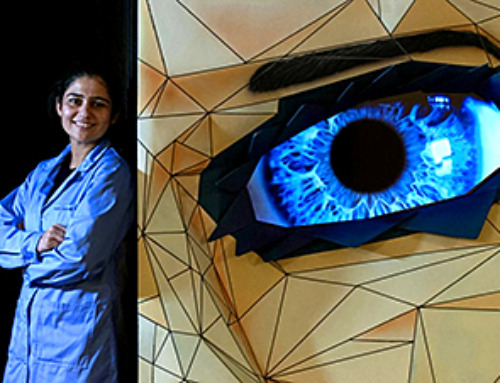By harnessing advanced AI, MethylGPT decodes DNA methylation with unprecedented accuracy, offering new paths for age prediction, disease diagnosis, and personalized health interventions.
In a recent study posted to the bioRxiv preprint* server, researchers developed a transformer-based foundation model, MethylGPT, for the DNA methylome.
DNA methylation is a type of epigenetic modification that regulates gene expression via methyl-binding proteins and changes in chromatin accessibility. It also helps maintain genomic stability through transposable element repression. DNA methylation has features of an ideal biomarker, and studies have revealed distinct methylation signatures across pathological states, allowing for molecular diagnostics.
Nevertheless, several analytic challenges impede the implementation of diagnostics based on DNA methylation. Current approaches rely on simple statistical and linear models, which are limited in capturing complex, non-linear data. They also fail to account for context-specific effects such as higher-order interactions and regulatory networks. Therefore, a unified analytical framework that can model complex, non-linear patterns in various tissue and cell types is urgently needed.
Recent advances in foundation models and transformer architectures have revolutionized analyses of complex biological sequences. Foundation models have also been introduced for various omics layers, such as AlphaFold3 and ESM-3 for proteomics and Evo and Enformer for genomics. The achievements of the foundation models suggest that DNA methylation analyses could be transformed with a similar approach.
The study and findings
In the present study, researchers developed MethylGPT, a transformer-based foundation model for the DNA methylome. First, they acquired data on 226,555 human DNA methylation profiles spanning multiple tissue types from the EWAS Data Hub and Clockbase. Following deduplication and quality control, 154,063 samples were retained for pretraining. The model focused on 49,156 CpG sites, which were selected based on their known associations with various traits, as this would maximize their biological relevance.
The model was pre-trained using two complementary loss functions: masked language modeling (MLM) loss and profile reconstruction loss, enabling it to accurately predict methylation at masked CpG sites. The model achieved a mean squared error (MSE) of 0.014 and a Pearson correlation of 0.929 between predicted and actual methylation levels, indicating high predictive accuracy. Researchers also evaluated whether the model could capture biologically relevant features of DNA methylation. As such, they analyzed the learned representations of CpG sites in the embedding space.
They found that CpG sites clustered based on their genomic contexts, suggesting that the model learned the regulatory features of the methylome. In addition, there was a clear separation between autosomes and sex chromosomes, indicating that MethylGPT also captured higher-order chromosomal features. Next, the team analyzed zero-shot embedding spaces. This showed a clear biological organization, clustering by sex, tissue type, and genomic context.
Major tissue types formed well-defined clusters, indicating that the model learned methylation patterns specific to tissues without explicit supervision. Notably, MethylGPT also avoided batch effects, which often confound results in complex datasets. Besides, female and male samples demonstrated consistent separation, reflecting sex-specific differences. Next, the researchers assessed the ability of MethylGPT to predict chronological age from methylation patterns. To this end, they used a dataset of over 11,400 samples from diverse tissue types.
Fine-tuning for age prediction led to robust age-dependent clustering. Notably, intrinsic age-related organization was evident even before fine-tuning. Moreover, MethylGPT outperformed existing age prediction methods (e.g., Horvath’s clock and ElasticNet), achieving superior accuracy. Its median absolute error for age prediction was 4.45 years, further demonstrating its robustness. MethylGPT was also remarkably resilient to missing data. It exhibited stable performance with up to 70% missing data, outperforming multi-layer perceptron and ElasticNet approaches.
Analysis of methylation profiles during induced pluripotent stem cell (iPSC) reprogramming showed a clear rejuvenation trajectory; samples progressively transitioned to a younger methylation state over the course of reprogramming. The model was also able to identify the point during reprogramming (day 20) when cells began showing clear signs of epigenetic age reversal. Finally, the model’s ability to predict disease risk was assessed. The pre-trained model was fine-tuned to predict the risk of 60 diseases and mortality. The model achieved an area under the curve of 0.74 and 0.72 on validation and test sets, respectively.
In addition, they used this disease risk prediction framework to evaluate the impact of eight interventions on predicted disease incidence. Interventions included smoking cessation, high-intensity training, and the Mediterranean diet, among others, each of which showed varying degrees of effectiveness across disease categories. This showed distinct intervention-specific effects across disease categories, highlighting the potential of MethylGPT in predicting intervention-specific outcomes and optimizing tailored intervention strategies.
Conclusions
The findings illustrate that transformer architectures could effectively model DNA methylation patterns while preserving biological relevance. The organization of CpG sites based on regulatory features and genomic context suggests that the model captured fundamental aspects without explicit supervision. MethylGPT also demonstrated superior performance in age prediction across different tissues. Moreover, its robust performance in handling missing data (≤ 70%) underscores its potential utility in clinical and research applications.
News
Differentiating cancerous and healthy cells through motion analysis
Researchers from Tokyo Metropolitan University have found that the motion of unlabeled cells can be used to tell whether they are cancerous or healthy. They observed malignant fibrosarcoma cells and [...]
This Tiny Cellular Gate Could Be the Key to Curing Cancer – And Regrowing Hair
After more than five decades of mystery, scientists have finally unveiled the detailed structure and function of a long-theorized molecular machine in our mitochondria — the mitochondrial pyruvate carrier. This microscopic gatekeeper controls how [...]
Unlocking Vision’s Secrets: Researchers Reveal 3D Structure of Key Eye Protein
Researchers have uncovered the 3D structure of RBP3, a key protein in vision, revealing how it transports retinoids and fatty acids and how its dysfunction may lead to retinal diseases. Proteins play a critical [...]
5 Key Facts About Nanoplastics and How They Affect the Human Body
Nanoplastics are typically defined as plastic particles smaller than 1000 nanometers. These particles are increasingly being detected in human tissues: they can bypass biological barriers, accumulate in organs, and may influence health in ways [...]
Measles Is Back: Doctors Warn of Dangerous Surge Across the U.S.
Parents are encouraged to contact their pediatrician if their child has been exposed to measles or is showing symptoms. Pediatric infectious disease experts are emphasizing the critical importance of measles vaccination, as the highly [...]
AI at the Speed of Light: How Silicon Photonics Are Reinventing Hardware
A cutting-edge AI acceleration platform powered by light rather than electricity could revolutionize how AI is trained and deployed. Using photonic integrated circuits made from advanced III-V semiconductors, researchers have developed a system that vastly [...]
A Grain of Brain, 523 Million Synapses, Most Complicated Neuroscience Experiment Ever Attempted
A team of over 150 scientists has achieved what once seemed impossible: a complete wiring and activity map of a tiny section of a mammalian brain. This feat, part of the MICrONS Project, rivals [...]
The Secret “Radar” Bacteria Use To Outsmart Their Enemies
A chemical radar allows bacteria to sense and eliminate predators. Investigating how microorganisms communicate deepens our understanding of the complex ecological interactions that shape our environment is an area of key focus for the [...]
Psychologists explore ethical issues associated with human-AI relationships
It's becoming increasingly commonplace for people to develop intimate, long-term relationships with artificial intelligence (AI) technologies. At their extreme, people have "married" their AI companions in non-legally binding ceremonies, and at least two people [...]
When You Lose Weight, Where Does It Actually Go?
Most health professionals lack a clear understanding of how body fat is lost, often subscribing to misconceptions like fat converting to energy or muscle. The truth is, fat is actually broken down into carbon [...]
How Everyday Plastics Quietly Turn Into DNA-Damaging Nanoparticles
The same unique structure that makes plastic so versatile also makes it susceptible to breaking down into harmful micro- and nanoscale particles. The world is saturated with trillions of microscopic and nanoscopic plastic particles, some smaller [...]
AI Outperforms Physicians in Real-World Urgent Care Decisions, Study Finds
The study, conducted at the virtual urgent care clinic Cedars-Sinai Connect in LA, compared recommendations given in about 500 visits of adult patients with relatively common symptoms – respiratory, urinary, eye, vaginal and dental. [...]
Challenging the Big Bang: A Multi-Singularity Origin for the Universe
In a study published in the journal Classical and Quantum Gravity, Dr. Richard Lieu, a physics professor at The University of Alabama in Huntsville (UAH), which is a part of The University of Alabama System, suggests that [...]
New drug restores vision by regenerating retinal nerves
Vision is one of the most crucial human senses, yet over 300 million people worldwide are at risk of vision loss due to various retinal diseases. While recent advancements in retinal disease treatments have [...]
Shingles vaccine cuts dementia risk by 20%, new study shows
A shingles shot may do more than prevent rash — it could help shield the aging brain from dementia, according to a landmark study using real-world data from the UK. A routine vaccine could [...]
AI Predicts Sudden Cardiac Arrest Days Before It Strikes
AI can now predict deadly heart arrhythmias up to two weeks in advance, potentially transforming cardiac care. Artificial intelligence could play a key role in preventing many cases of sudden cardiac death, according to [...]





















